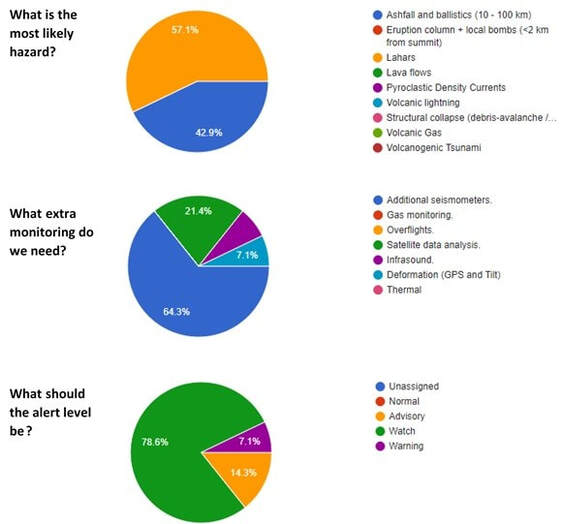|
I am always looking for ways to make teaching and assessments more than an essay or exam, but also to try and make these things a bit more world relevant. I may have an unfair advantage here, with a fantastic subject to teach like volcanology! Last academic year I started, alongside colleagues, a new third year module in 'Applied Volcanology'. In this module, we covered three main aspects:
At the beginning of the Volcano Challenge Week (which was actually ten days in the end), the students were thrown into an ongoing, but fictitious, volcanic crisis (at a real volcano). Every two or three days, new monitoring information was released, such as gas composition and amount, seismicity, deformation, and overflight data. From this progressive release of information the students were then asked to write a risk report with an assessment of most likely eruption scenarios, and if possible their probabilities. Given the uniqueness of this assessment, in comparison to those that the students may be used to, they were supported with a specific lecture on hazard assessment and decision making, but also a seminar. In this seminar students were given a short scenario, mimicking the Volcano Challenge week but for a different volcano, and using their expert opinions to gauge what most likely hazards would be, and also think about setting alert levels (see Figure below). Unfortunately, initial plans were for all of this to be in person (scheduled for April/May 2020), however, the content was also quite suited to an online setting using students in breakout groups to discuss the various ongoing and changing fictitious volcanic crisis events.
Comments are closed.
|
Archives
July 2023
|


 RSS Feed
RSS Feed